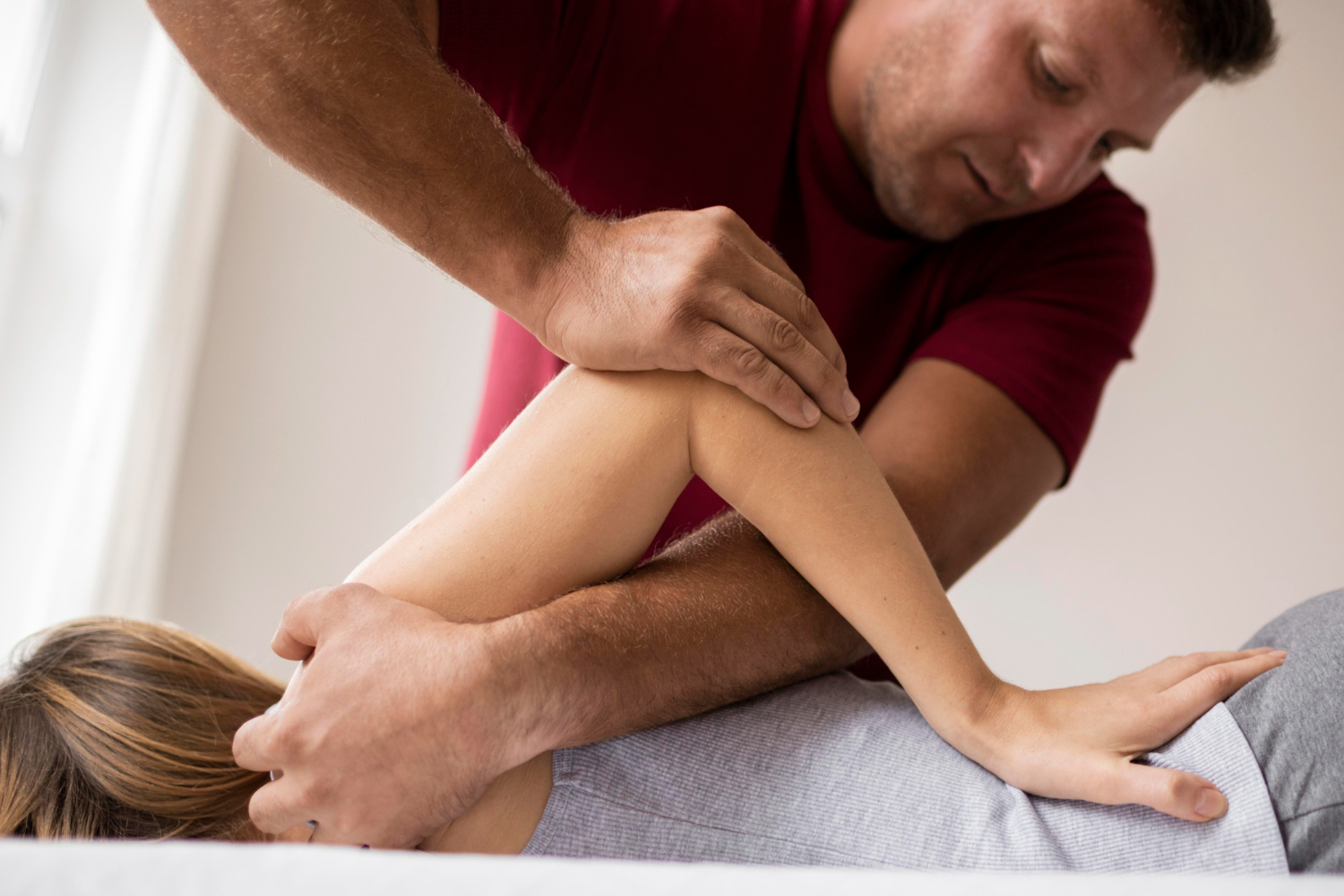Using hands-on techniques that enhance joint performance and reduce discomfort, osteopathic treatment emphasises on bringing the body back into balance and mobility. Although very good on its own, combining it with sports massage targets muscle tension, boosts circulation, and supports injury recovery, enhancing its advantages. Osteopathic changes are more successful and long-lasting since sports massage helps relax stiff muscles, lower inflammation, and heal faster.
Reducing Pain and Inflammation
Common causes of people seeking osteopathic treatment are persistent pain and inflammation. From postural problems to recurrent strain to sports injuries, persistent pain can make daily activities difficult. Even though osteopathic treatments help restore posture and reduce nerve pressure, sports massage provides better pain relief by increasing circulation and reducing muscular stress.
Massage promotes blood flow to injured or irritated areas, supplying oxygen and nutrients designed for healing. It also helps eliminate metabolic waste products such lactic acid, which aggravates muscle pain and stiffness. Sports massage Ashford reduces muscle tension and improves circulation, helping osteopathic treatments more precisely alleviate pain.
Enhancing Muscle Function and Flexibility
Increasing joint mobility and muscle function is one of the main ideas behind osteopathy. Tight muscles, however, can limit motion and compromise the efficacy of osteopathic treatments. Sports massage increases flexibility, releases muscle tension, and assists in relaxing.
Osteopathic treatments become more effective when the muscles are more relaxed and flexible. An osteopath finds it more difficult to adjust joints and increase range of motion when a tight muscle resists movement. Sports massage either before or after osteopathic therapy, helps patients have better adjustments, less stiffness, and more natural movement ease.
Supporting Injury Recovery
Many times, injuries comprise inflammation, joint misalignment, and muscular strain. While sports massage can help with recuperation, osteopaths seek to correct the proper alignment and function of the afflicted parts. Massage therapy supports circulation, lowers scar tissue development, and helps prevent secondary issues, including muscular imbalances, so supporting the healing process.
For a damaged ankle, the surrounding muscles might contract to balance the injury. Inadequately managed compensation may lead to further dysfunction and pain. While a sports massage therapist works on the surrounding muscles to prevent stiffness, the osteopath guarantees suitable alignment of the joints. Taken in concert, these treatments promote a faster and more complete healing.
Improving Postural Alignment
One often occurring problem causing persistent discomfort, muscular imbalances, and limited mobility is poor posture. Through spine, pelvis, and other joint adjustments, osteopathic treatment successfully correct postural misalignments. But muscles are absolutely essential for maintaining posture; if they are either weak or tight, postural problems will last.
Sports massage targets particular muscles causing bad posture, therefore improving it. It stimulates underactive muscles to bring equilibrium while releasing tension in hyperactive ones. For instance, osteopathy can correct the spine and ribs for those with rounded shoulders from extended sitting; sports massage targets the chest and back muscles to support correct posture.
Managing Stress and Promoting Relaxation
The nerve system is changed significantly by both sports massage and osteopathy. Stress reactions brought on by chronic pain, tension, and physical misalignments can cause muscles to tense more, poor sleep, and general bad well-being. By increasing circulation, lowering nerve compression, and hence improving general function, osteopathic treatment helps reset the body’s neurological system.
Sports massage improves this by promoting deep relaxation. Massage therapy reduces cortisol, the stress hormone, while it raises endorphins and serotonin, improving health. Many patients say they feel more rested, more calm, more focused after both osteopathic treatment and sports massage.
Preventing Re-Injury and Enhancing Performance
Sportsmen and physically active people commonly seek osteopathic treatment and sports massage to avoid injuries and enhance performance. Osteopaths evaluate movement patterns and treat biomechanical problems that can cause someone to be injury-prone. Sports massage maintains muscles free from too-tight tension, flexible, and healthy, lowering the risk of strains and overuse problems.
Regular sports massages can find early indicators of imbalances or muscular tightness before they cause damage. This proactive approach guarantees that the body stays in best shape for athletic performance when paired with osteopathic therapies. Many professional sportsmen minimise setbacks and preserve optimal physical condition by using both therapies.
Conclusion
These treatments cooperate to restore balance, ease pain, and maximise movement because of their complimentary effects. Sports massage combined with osteopathy is becoming more and more popular as more people understand the need of a complete approach to musculoskeletal health since it provides patients with a well-rounded, efficient, and environmentally friendly method of treatment.
